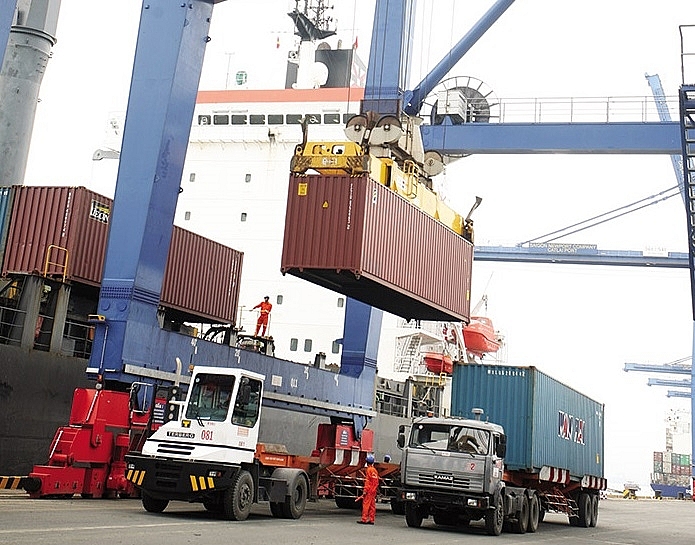Vietnam poised to profit from free trade agreements
 |
| Lindsey Ice, senior economist from Spanish-based FocusEconomics, which provides in-depth global economic analysis |
Since the doi moi policy started in 1986 and more recently through its accession to the World Trade Organization in 2007, Vietnam has become a success story of robust economic growth driven by trade liberalisation and global integration. Indeed, Vietnam’s opening to international commerce and FDI has undoubtedly played a pivotal role in the stellar growth it has experienced over the last three decades, which transformed it from one of the poorest nations in the world to a middle-income market economy. Its economic narrative has been one of rapid transition from an agriculture-based economy to one where manufacturing and services play a much larger role.
One key way of boosting trade and economic development is through participation in free trade agreements (FTAs). Two such pacts that are slated to come into effect in 2019 and could have a profound impact on the economy are the Comprehensive and Progressive Agreement for Trans-Pacific Partnership (CPTPP) and the European Union-Vietnam Free Trade Agreement (EVFTA).
The CPTPP is a multilateral trade agreement composed of 11 Pacific Rim nations, encompassing more than 13 per cent of the global GDP and a shared market of around 500 million people.
According to the European Commission, the EVFTA is the most ambitious free trade framework it has ever pursued with a developing country. Both deals will substantially hack away at tariff and non-tariff barriers.
The principles of both frameworks are to boost growth prospects through greater economic co-operation and stronger trade ties. Vietnam stands to gain from both of them through increased FDI, further integration in regional and global supply chains, and a growing export market share. Both deals are seen as boosting Vietnam’s trade opportunities for many of its sectors, including textiles, leather and footwear, e-commerce and services, and helping fortify the country’s status as a low-tech manufacturing hub.
However, more important for Vietnam’s economic development will be the continued shift away from exporting low-tech manufacturing products and primary goods to more complex high-tech goods like electronics, machinery, vehicles, and medical devices. This will be made possible first through more diversified input sources from larger trade networks and cheaper imports of intermediate goods from partner countries, which should boost the competitiveness of Vietnam’s exports.
Second, through partnership with foreign businesses that can transfer the know-how and technology needed to make the leap into higher valued-added production, more sophisticated business practices and technology will help boost Vietnam’s labour productivity and expand the country’s export capacity.
As most of Vietnam’s current FDI largely originates from Asian countries, the presence of investors from Europe and advanced countries like Australia and Canada has room to grow – and these trade pacts will provide fresh impetus.
Moreover, while recent FDI has been primarily channeled into manufacturing or real estate, other emerging sectors represent untapped opportunities for foreign companies to reap profitable returns on investment. Indeed, one sector that has already begun to allure funding is clean energy, particularly natural gas and wind development.
European investors’ entry into Vietnamese service markets, including banking and insurance, maritime transport, and environmental services, should help modernise these markets and improve service quality. A recent survey by the European Chamber of Commerce revealed that the majority of participants believe the EVFTA will make Vietnam more competitive and turn it into a hub for European business in the region.
Mergers and acquisitions will likely become more prevalent and will be pivotal in boosting total factor productivity. Further global integration resulting from the trade deals, combined with the prolonged trade dispute between the US and China could see an influx of multinationals establishing bases in Vietnam to divert their supply chains away from China.
Apart from the direct benefits of trade and FDI, the deals should be catalysts of other important changes. One such advantage will be greater alignment with international standards from workers’ rights to environmental protection. Both FTAs require compliance with the International Labour Organization’s (ILO) standards, including the freedom of association and the elimination of forced labour.
Commenting on potential labour market reform, Chang-Hee Lee from ILO Vietnam noted, “This is really an opportunity for Vietnam to modernise its labour laws and industrial relations system, and the need for such reforms firstly comes from the country’s internal context.”
Meanwhile, the articles of the treaties will require Vietnam to abide international standards more closely for products like pharmaceuticals and motor vehicles.
 |
| FTAs will help align Vietnam with global standards |
Challenges
While the FTAs will likely be beneficial to Vietnam’s overall economy, there are still downsides. For one, these agreements will unleash fierce competition from foreign rivals on local businesses, with agriculture in particular set to be exposed to greater foreign competition, particularly from meat and dairy products from the EU, Australia, and Canada. If businesses are not poised to adapt and make use of new market opportunities and the potential for partnership with foreign investors they could struggle to compete.
Moreover, the benefits of FDI and trade are not inherent to the agreements themselves, but are rather largely dependent on the frameworks put in place to ensure sustainable growth and the contribution of foreign businesses to local markets.
In order to maximise the potential these agreements offer, the Vietnamese government needs to continue making progress on important reforms, especially with regard to strengthening the banking sector, refining legal and tax structures, and improving trade facilitation. Emphasis should be put on foreign-invested projects that transfer technology or expertise to domestic businesses.
Vietnam’s 30 years of remarkable growth and advancement on the global stage make it a posterchild for the benefits of trade liberalisation. With a low-cost base, demographic dividend, and strong government commitment to reform, Vietnam stands poised to benefit significantly from its involvement in the CPTPP and the EVFTA.
According to the Vietnamese Ministry of Planning and Investment, the CPTPP could raise Vietnam’s GDP by 1.3 percentage points and exports by 4.0 percentage points by 2035, while the EU considers that the EVFTA could lift Vietnam’s GDP by 15 per cent. These two deals, along with other FTAs which will likely come in the future, should help ensure that the next 30 years are just as positive.
What the stars mean:
★ Poor ★ ★ Promising ★★★ Good ★★★★ Very good ★★★★★ Exceptional
 Tag:
Tag:
Related Contents
Latest News
More News
- Global partnerships key to Vietnam’s IFC development (December 26, 2025 | 16:18)
- Vingroup pulls out of bid to invest in North-South high-speed railway (December 26, 2025 | 11:42)
- Strengthening supply chains through trade promotions and customs reform (December 24, 2025 | 14:00)
- PM orders investment model for North–South high-speed rail (December 22, 2025 | 17:43)
- LS Eco Energy to invest in Vietnam rare earth sector (December 22, 2025 | 17:31)
- Government moves to establish International Financial Centre (December 21, 2025 | 21:00)
- Vietnam's IFC to target global investment flows (December 21, 2025 | 18:00)
- Two national hospitals expand capacity with new facilities (December 20, 2025 | 09:00)
- Ha Tinh breaks ground on major Vingroup industrial and energy projects (December 19, 2025 | 18:24)
- EVN launches major power infrastructure projects nationwide (December 19, 2025 | 18:17)






















 Mobile Version
Mobile Version